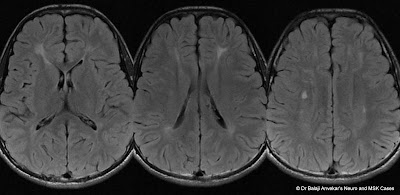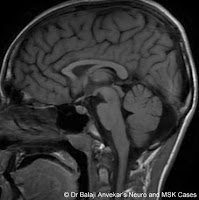|
Σφακιανάκης Αλέξανδρος
ΩτοΡινοΛαρυγγολόγος
Αναπαύσεως 5 Άγιος Νικόλαος
Κρήτη 72100
00302841026182
00306932607174
alsfakia@gmail.com
Αρχειοθήκη ιστολογίου
-
►
2023
(391)
- ► Φεβρουαρίου (200)
- ► Ιανουαρίου (191)
-
►
2022
(2843)
- ► Δεκεμβρίου (161)
- ► Σεπτεμβρίου (219)
- ► Φεβρουαρίου (264)
- ► Ιανουαρίου (280)
-
▼
2021
(5625)
- ► Δεκεμβρίου (231)
- ► Σεπτεμβρίου (345)
-
▼
Αυγούστου
(486)
-
▼
Αυγ 29
(24)
- Astragaloside IV alleviates heart failure by regul...
- Giant chondroid lipoma of the breast: A case repor...
- Fumaric acid and succinic acid treat gestational h...
- Behavioral Interventions Targeting Insufficient Up...
- Man with headache and altered mental status
- Dual laryngeal reinnervation in bilateral vocal fo...
- Additive Manufacturing for Personalized Skull Base...
- The potential of the incorporated collagen microsp...
- BMP2 downregulates urokinase-type plasminogen acti...
- Catamnesis after a single intervention for tinnitu...
- Do people living with HIV face more secondary canc...
- Regression of nevi, vitiligo-like depigmentation a...
- Nivolumab exposure in a hemodialysis patient with ...
- Expression of the cancer stem cell marker OCT4 is ...
- COVID-19 vaccination mimicking lymph-node progress...
- Aseptic cystitis induced by nivolumab and ipilimum...
- Metastatic acral melanoma treatment outcomes: a sy...
- Clinical implications of alpha, beta, and gamma HP...
- Adenoidectomy for middle ear disease in cleft pala...
- Anterior part middle turbinoplasty in endoscopic s...
- What is the role of the surgeon in the management ...
- Isolated Superficial Sylvian Vein Thrombosis MRI
- Ears of the lynx sign MRI Brain
- Leukoencephalopathy, brain calcifications and cyst...
-
▼
Αυγ 29
(24)
- ► Φεβρουαρίου (620)
-
►
2020
(2065)
- ► Δεκεμβρίου (535)
- ► Σεπτεμβρίου (222)
- ► Φεβρουαρίου (28)
-
►
2019
(9608)
- ► Δεκεμβρίου (19)
- ► Σεπτεμβρίου (54)
- ► Φεβρουαρίου (3791)
- ► Ιανουαρίου (3737)
-
►
2018
(69720)
- ► Δεκεμβρίου (3507)
- ► Σεπτεμβρίου (3851)
- ► Φεβρουαρίου (8116)
- ► Ιανουαρίου (7758)
-
►
2017
(111579)
- ► Δεκεμβρίου (7718)
- ► Σεπτεμβρίου (7549)
- ► Φεβρουαρίου (10753)
- ► Ιανουαρίου (10529)
-
►
2016
(16402)
- ► Δεκεμβρίου (7478)
- ► Φεβρουαρίου (900)
- ► Ιανουαρίου (1250)
! # Ola via Alexandros G.Sfakianakis on Inoreader
- Scholar : Ειδοποίηση Μελετητή - [ Εξωτε - 8/31/2017 - Alexandros G. Sfakianakis,Anapafseos 5 Agios Nikolaos 72100 Crete Greece,00306932607174,00302841026182
- Scholar : Ειδοποίηση Μελετητή - [ ΦΩΝΗΤ - 8/31/2017 - Alexandros G. Sfakianakis,Anapafseos 5 Agios Nikolaos 72100 Crete Greece,00306932607174,00302841026182
- Scholar : Ειδοποίηση Μελετητή - [ ΑΚΟΥΣ - 8/31/2017 - Alexandros G. Sfakianakis,Anapafseos 5 Agios Nikolaos 72100 Crete Greece,00306932607174,00302841026182
- Scholar : Ειδοποίηση Μελετητή - [ ωτα ] - 8/31/2017 - Alexandros G. Sfakianakis,Anapafseos 5 Agios Nikolaos 72100 Crete Greece,00306932607174,00302841026182
- Scholar : Ειδοποίηση Μελετητή - [ ΑΚΟΗ ] - 8/31/2017 - Alexandros G. Sfakianakis,Anapafseos 5 Agios Nikolaos 72100 Crete Greece,00306932607174,00302841026182
Η λίστα ιστολογίων μου
Κυριακή 29 Αυγούστου 2021
Ears of the lynx sign MRI Brain
Εγγραφή σε:
Σχόλια ανάρτησης (Atom)
Αρχειοθήκη ιστολογίου
-
►
2023
(391)
- ► Φεβρουαρίου (200)
- ► Ιανουαρίου (191)
-
►
2022
(2843)
- ► Δεκεμβρίου (161)
- ► Σεπτεμβρίου (219)
- ► Φεβρουαρίου (264)
- ► Ιανουαρίου (280)
-
▼
2021
(5625)
- ► Δεκεμβρίου (231)
- ► Σεπτεμβρίου (345)
-
▼
Αυγούστου
(486)
-
▼
Αυγ 29
(24)
- Astragaloside IV alleviates heart failure by regul...
- Giant chondroid lipoma of the breast: A case repor...
- Fumaric acid and succinic acid treat gestational h...
- Behavioral Interventions Targeting Insufficient Up...
- Man with headache and altered mental status
- Dual laryngeal reinnervation in bilateral vocal fo...
- Additive Manufacturing for Personalized Skull Base...
- The potential of the incorporated collagen microsp...
- BMP2 downregulates urokinase-type plasminogen acti...
- Catamnesis after a single intervention for tinnitu...
- Do people living with HIV face more secondary canc...
- Regression of nevi, vitiligo-like depigmentation a...
- Nivolumab exposure in a hemodialysis patient with ...
- Expression of the cancer stem cell marker OCT4 is ...
- COVID-19 vaccination mimicking lymph-node progress...
- Aseptic cystitis induced by nivolumab and ipilimum...
- Metastatic acral melanoma treatment outcomes: a sy...
- Clinical implications of alpha, beta, and gamma HP...
- Adenoidectomy for middle ear disease in cleft pala...
- Anterior part middle turbinoplasty in endoscopic s...
- What is the role of the surgeon in the management ...
- Isolated Superficial Sylvian Vein Thrombosis MRI
- Ears of the lynx sign MRI Brain
- Leukoencephalopathy, brain calcifications and cyst...
-
▼
Αυγ 29
(24)
- ► Φεβρουαρίου (620)
-
►
2020
(2065)
- ► Δεκεμβρίου (535)
- ► Σεπτεμβρίου (222)
- ► Φεβρουαρίου (28)
-
►
2019
(9608)
- ► Δεκεμβρίου (19)
- ► Σεπτεμβρίου (54)
- ► Φεβρουαρίου (3791)
- ► Ιανουαρίου (3737)
-
►
2018
(69720)
- ► Δεκεμβρίου (3507)
- ► Σεπτεμβρίου (3851)
- ► Φεβρουαρίου (8116)
- ► Ιανουαρίου (7758)
-
►
2017
(111579)
- ► Δεκεμβρίου (7718)
- ► Σεπτεμβρίου (7549)
- ► Φεβρουαρίου (10753)
- ► Ιανουαρίου (10529)
-
►
2016
(16402)
- ► Δεκεμβρίου (7478)
- ► Φεβρουαρίου (900)
- ► Ιανουαρίου (1250)





Δεν υπάρχουν σχόλια:
Δημοσίευση σχολίου